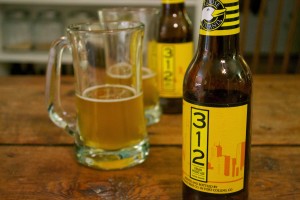Headline: Water Efficiency at St. Margaret’s to Get Even Better–in advance of the new building

First thing to note about the subject is that St. Margaret’s does not irrigate. No grass or plant bed sprinklering—even during summer heat waves.
That decision should earn 4 LEED points for “Water Efficient Landscaping – reduce by 50% or no potable water use/irrigation” for the Education/Formation Building. (Update: the project has been awarded the 4 LEED points for this credit.)
Next steps involve water efficient fixtures in the new building, and retrofits to existing buildings as budget allows.
One retrofit is already targeted. I have it on excellent backgrounder that a parishioner’s offer to install an accessible dual-flush toilet in the Narthex bathroom has been accepted and will become a new “fixture” there sometime in August.
 Here’s one calculator showing the impact of a newer water-efficient fixture versus an older one that many of you have in your homes. (Our 3 are dual-flush.)
Here’s one calculator showing the impact of a newer water-efficient fixture versus an older one that many of you have in your homes. (Our 3 are dual-flush.)
The manufacturer of the one going into the Narthex bathroom claims an average water savings of 37%. And, that’s not to mention the cost of electricity to pump the flushing water from the well, or disposal costs on the downstream side.
Speaking of saving water, here’s a twist on the expression…
 Some of you have probably coiffed best-selling Goose Island 312 Urban Wheat Ale or other of its brews? Lucky you, no doubt!
Some of you have probably coiffed best-selling Goose Island 312 Urban Wheat Ale or other of its brews? Lucky you, no doubt!
Did you know that 90% of the contents of a bottle of brew is water?
A major threat to craft brewer Goose Island isn’t Sam Adams or something along the lines of Miller Lite. It’s the water supply from Lake Michigan when stormwater (read: raw sewage) overcomes Chicago’s sanitation system and pours into the Chicago River. So says a recent Washington Post article.
Threat becomes reality when a 5-inch storm falls in Chicago within a 12-hour period. When that occurs, the flow of the Chicago River reverses, dumping the sewage into Lake Michigan (rather than into the Mississippi Delta watershed in lesser storms). City beaches, and Goose Island’s brewing operations, must be immediately shut down for several days. Until the 1970s, according to the story, that event occurred about once a decade. In the past 5 years, it’s happened 3 times, making for a very worrisome extreme weather trend. The National Climate Change Assessment report, released in May, predicts storms of the same 5-inch-12-hour scale could triple in the Midwest over the next 100 years.

Writer Danielle Paquette describes raw sewage now hitting the river when 1″ of rain falls citywide. To prevent flooding, the city’s water management department must release the raw sewage into the river. Just 1″! Outfall sensors on the river offer email alerts which Goose Island manager Ian Hughes gets on his cell phone, warning him to take unusual precautions with the approximately 50,000 gals. of water they harvest daily from the lake.
As it is: “Each week, Hughes hosts a water-testing panel, sipping aqua specimens from seven brewery faucets, taking notes. He keeps an archive (summer lake, for example, typically tastes musty). If samples don’t pass inspection, brewing must halt – and a delay that costs the company thousands of dollars.” Bravo to Goose Island for publicizing a risk to its business at two levels: the brews, and the public perception.
So, forget swimming from Gold Coast beaches in the city on those certain days. Stormwater management engineering projects, such as the Chicago Deep Tunnel, are often behind the demand curve as there’s too darned impervious surface in our urban areas!
Thankfully, St. Margaret’s is doing something about stormwater runoff on its campus. Decisions have been made to not add to impervious parking sheets and to preserve open (landscaped) space on the new building’s site–with likely LEED points to boot. (Update: the project has been awarded 4 total points for LEED Sustainable Sites credit 5.2, Site Development–Maximize Open Space, including one for Exemplary performance and another for Regional Priority conformance.)
Too, Anne Arundel County has toughened its regulations regarding impervious surfaces in connection with new construction or major renovation and their effects on stormwater runoff.